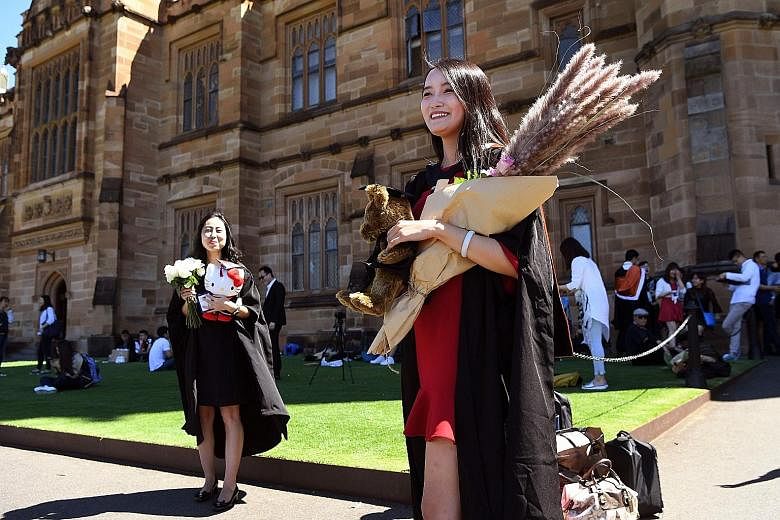Over 700,000 foreign students are enrolled in universities and other education facilities in Australia this year, a record number delivering a boost to the country's economy.
But the boom in the international student sector has also raised concerns about the experience of foreign students outside campuses, including their tendency to cluster in inner-city "ghettos".
Their high concentration around central business districts has raised concerns that they may be adding to property price pressures as well as limiting their interaction with the broader Australian community.
As of August, there were 708,350 foreign students, a rise of 13 per cent from last year. Of this number, 338,399 were enrolled in universities - up 15 per cent from last year.
Most of them were from China, accounting for about a third of the total foreign student population. Behind China were India, Nepal, Malaysia, Vietnam, Pakistan, Indonesia and Hong Kong. Singapore was the 10th largest source of foreign tertiary students, with 7,160 enrolled as of August.
Australia's international student sector was worth about A$28.6 billion (S$29.8 billion) last year, including tuition fees and living expenses, according to a recent analysis by the Australian Bureau of Statistics.
This makes education Australia's third-largest export behind iron ore and coal.
Analysts have credited the boom to the strong reputation of Australian universities, along with a slightly weaker currency and the proximity to Asia.
Economist Saul Eslake, a vice-chancellor's fellow at the University of Tasmania, said Australian universities did not necessarily rank as highly as top-league institutions in the United States or Britain, but were much more affordable.
"I think what attracts students here is that an Australian tertiary education is considered to be high-quality," he told The Straits Times.
"By comparison with Ivy League and Oxbridge universities that rank higher than ours, it costs a lot less."
Noting the high number of students from China and South-east Asia, he said: "(Australia) is probably more affordable for them. It is close and in the same time zone."
But the growing numbers have prompted calls by academics and international student bodies for universities and state governments to do more to plan for and accommodate students.
About two-thirds of students attend institutions in Sydney and Melbourne, the two largest cities in Australia, and many of these students have clustered in the inner city, particularly in high-rise buildings and apartment complexes in or near the central business districts.
An expert on the sector, Ms Julie Hare, an honorary senior fellow at the University of Melbourne, said the high concentration of students in the inner cities of Sydney and Melbourne was "clogging infrastructure, adding to house and rental prices and causing 'ghetto-isation' in some residential areas".
"The challenge now is to ensure the boom in student numbers isn't undermined by bad experiences and lack of capacity," she wrote in an article on The Conversation website on Nov 3. "What is needed is a real, coordinated, practical, focused and strategic oversight of this enormously important sector to ensure its reputation and financial health into the future."
A report last year prepared by the University of Technology Sydney for the city of Sydney found the well-being of international students in Sydney was "generally good". But it also noted that some students were susceptible to alcohol and gambling issues as they dealt with new-found freedom or social and study stresses.
"Although accommodation is expensive, international students consider Sydney to be a desirable place to study and live in," the report found. "Socially, international students are integrating well within their own networks."
Commenting on his experience as an international student, Mr Chakx Asis Singh, a commerce student from India, said leaving home brought challenges initially but he has since made a few good friends.
"So I feel less homesick now."

